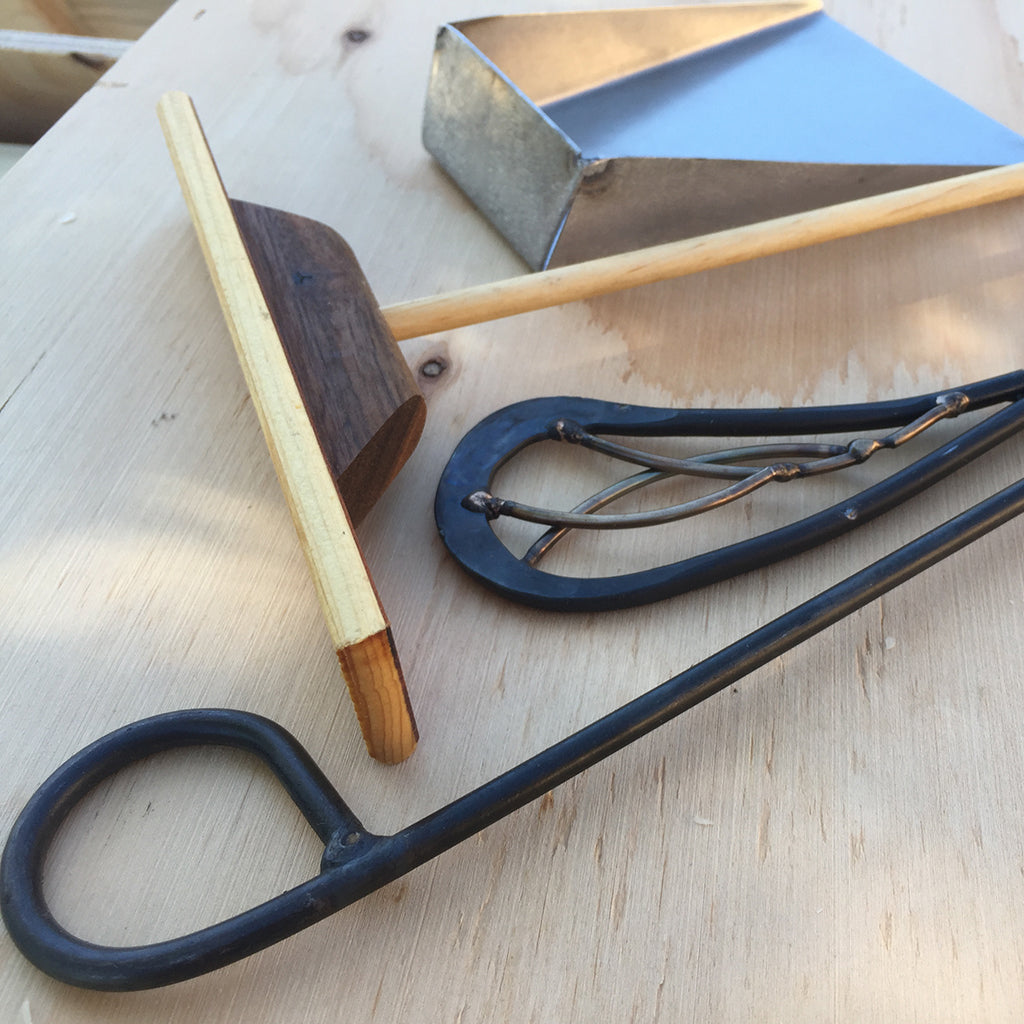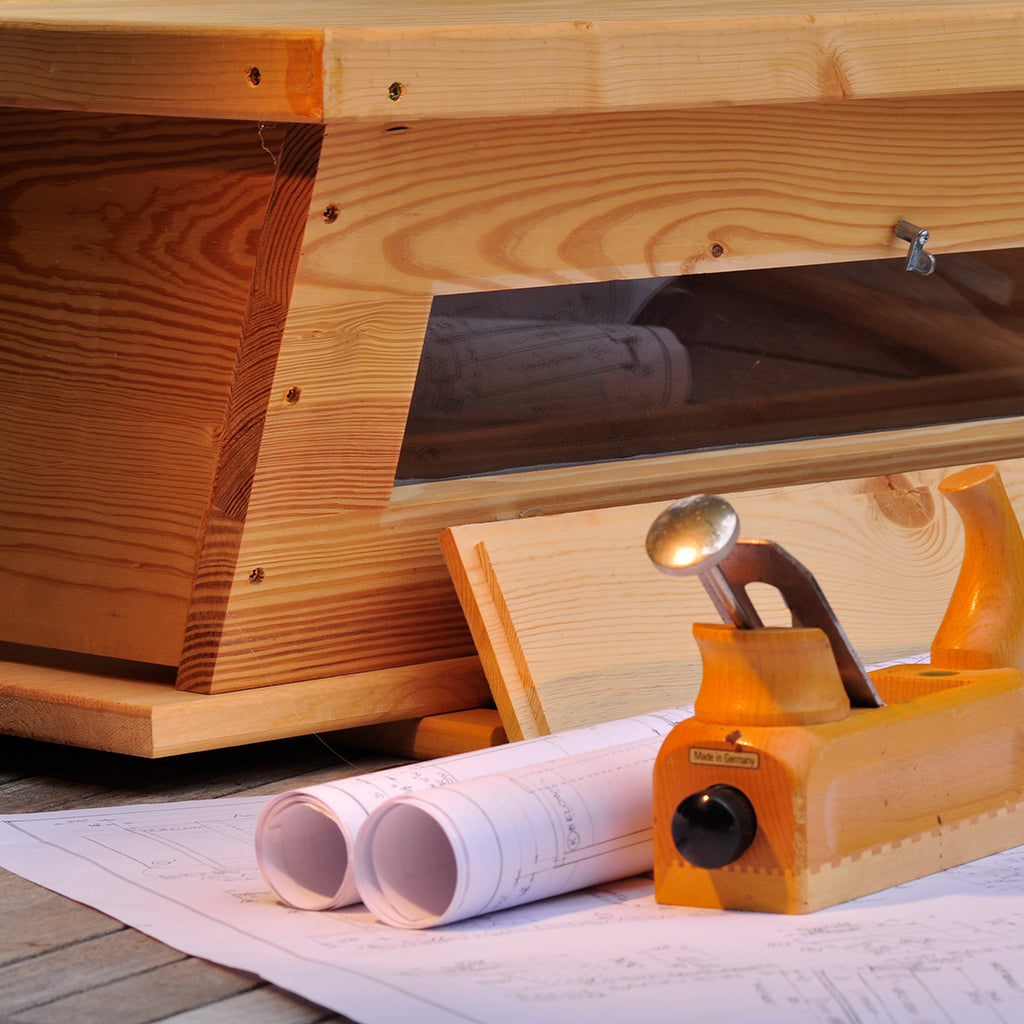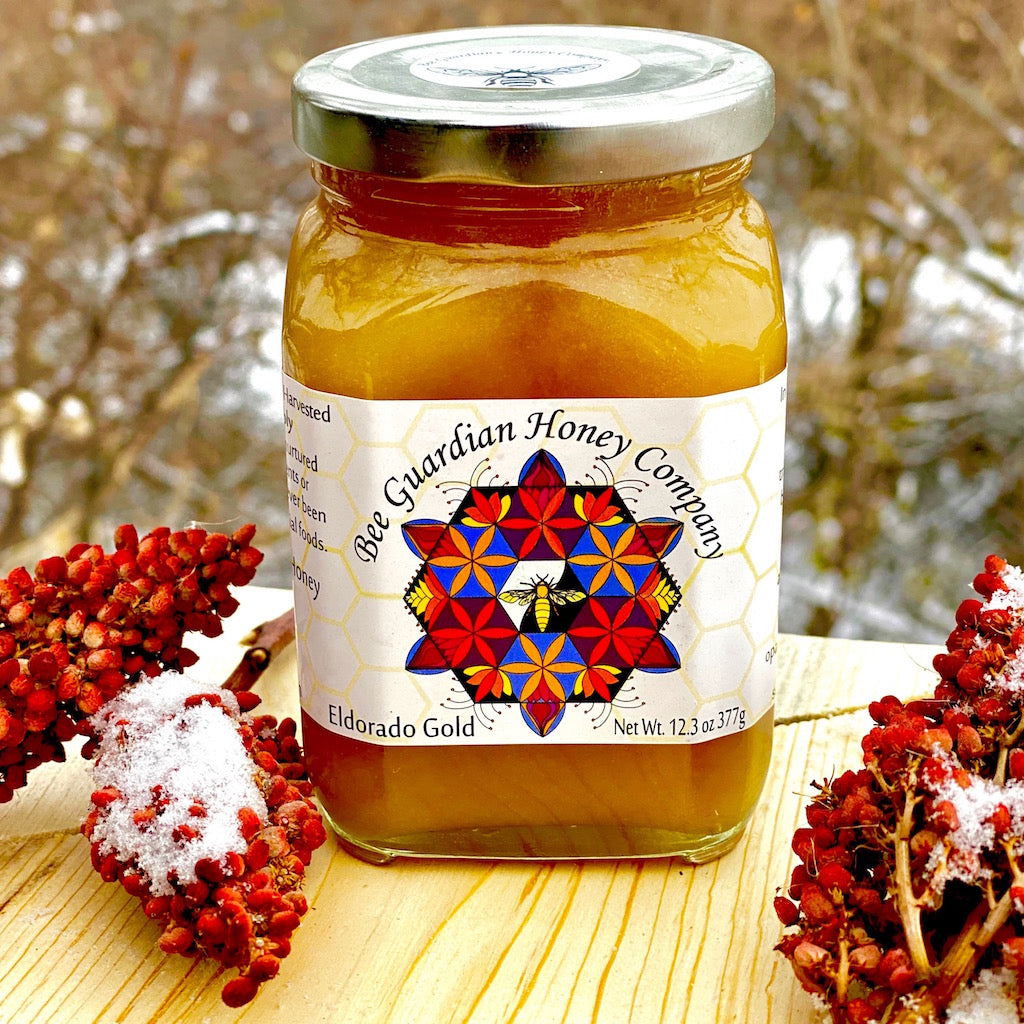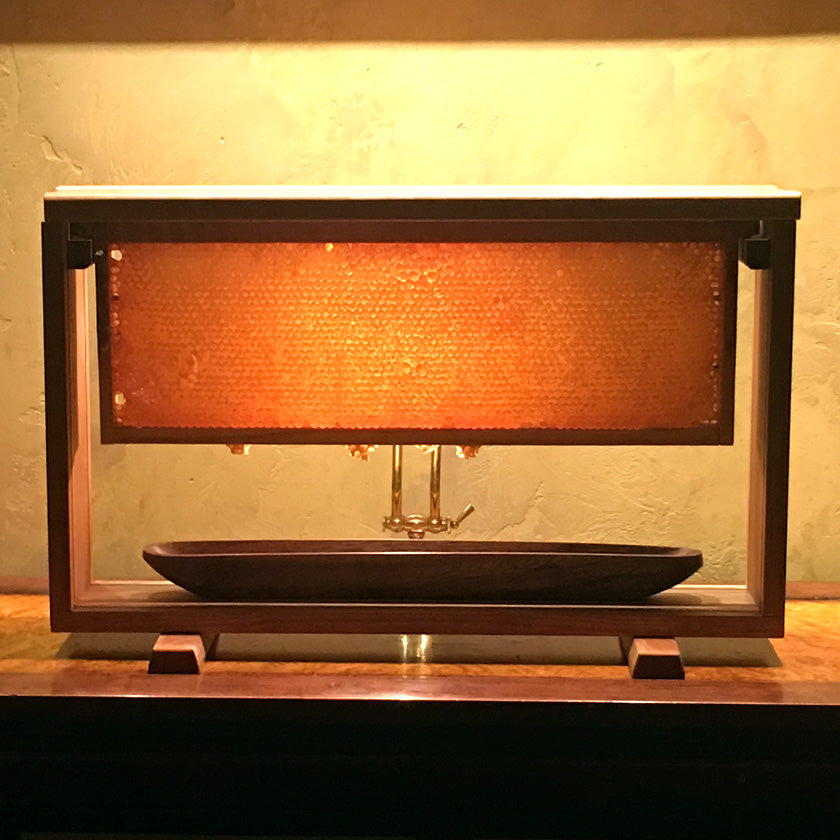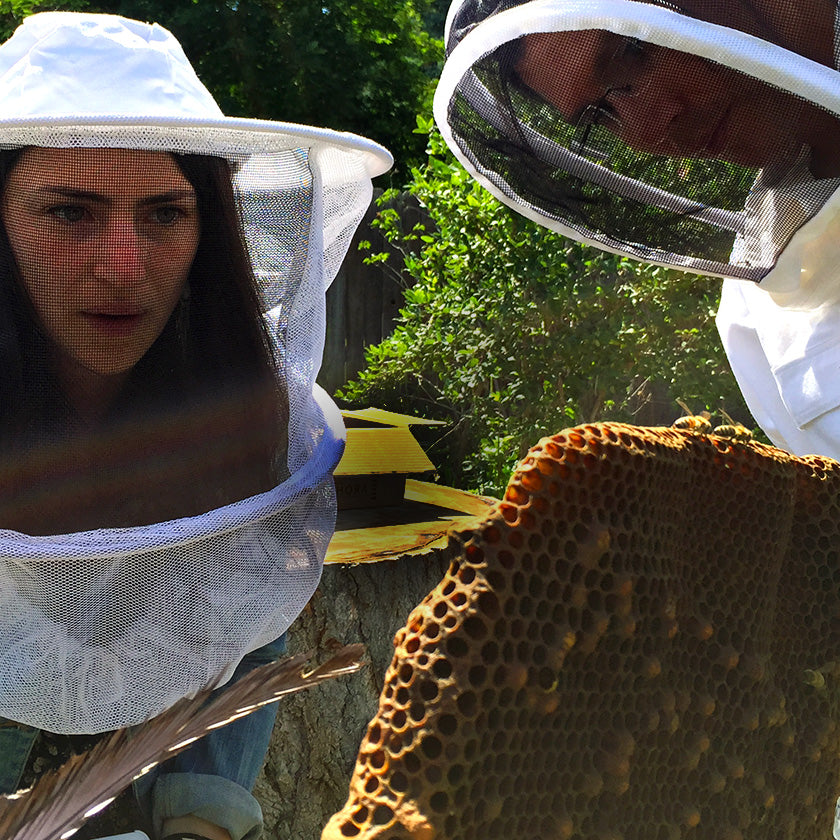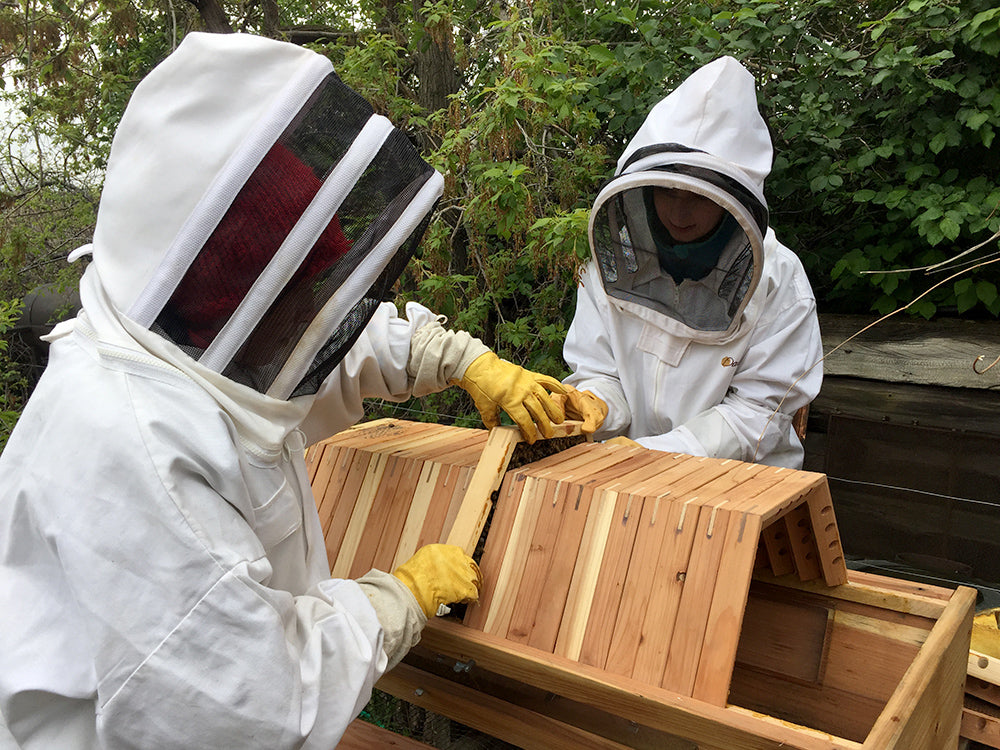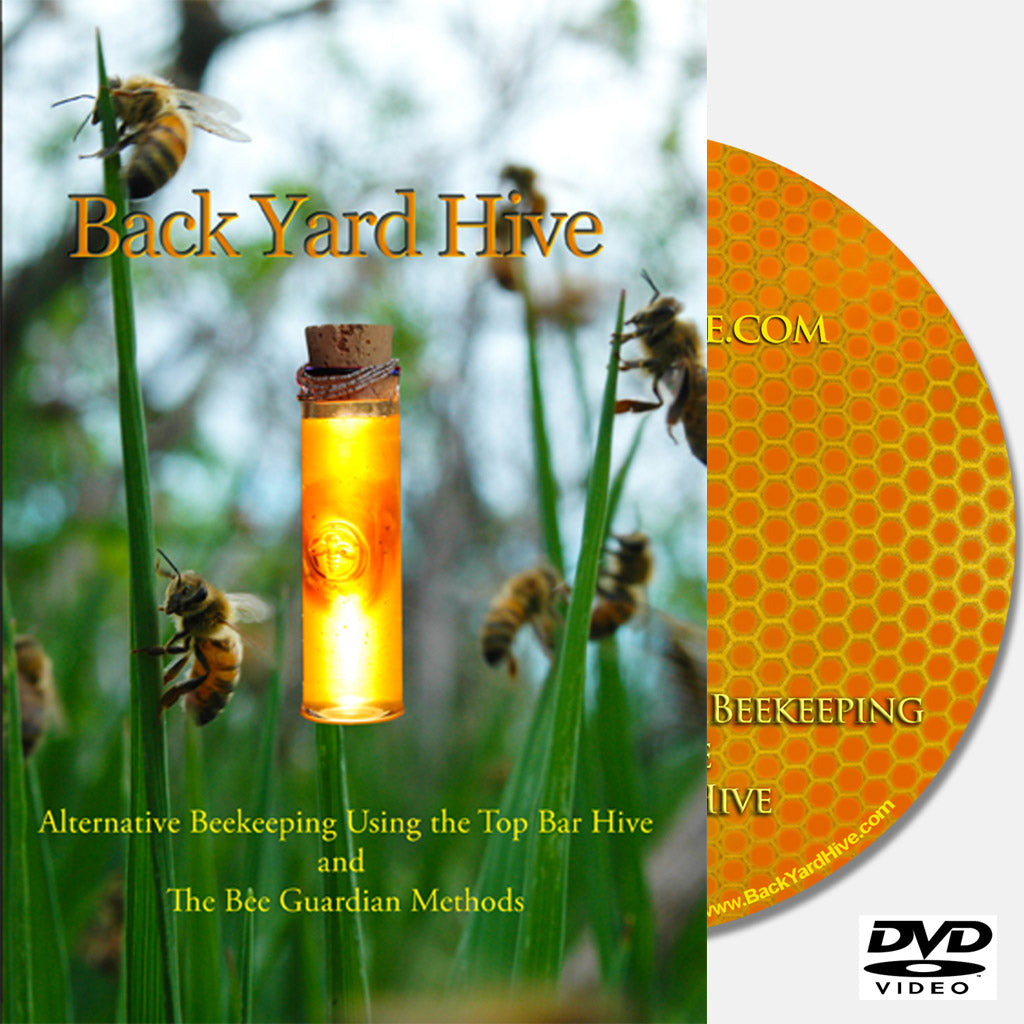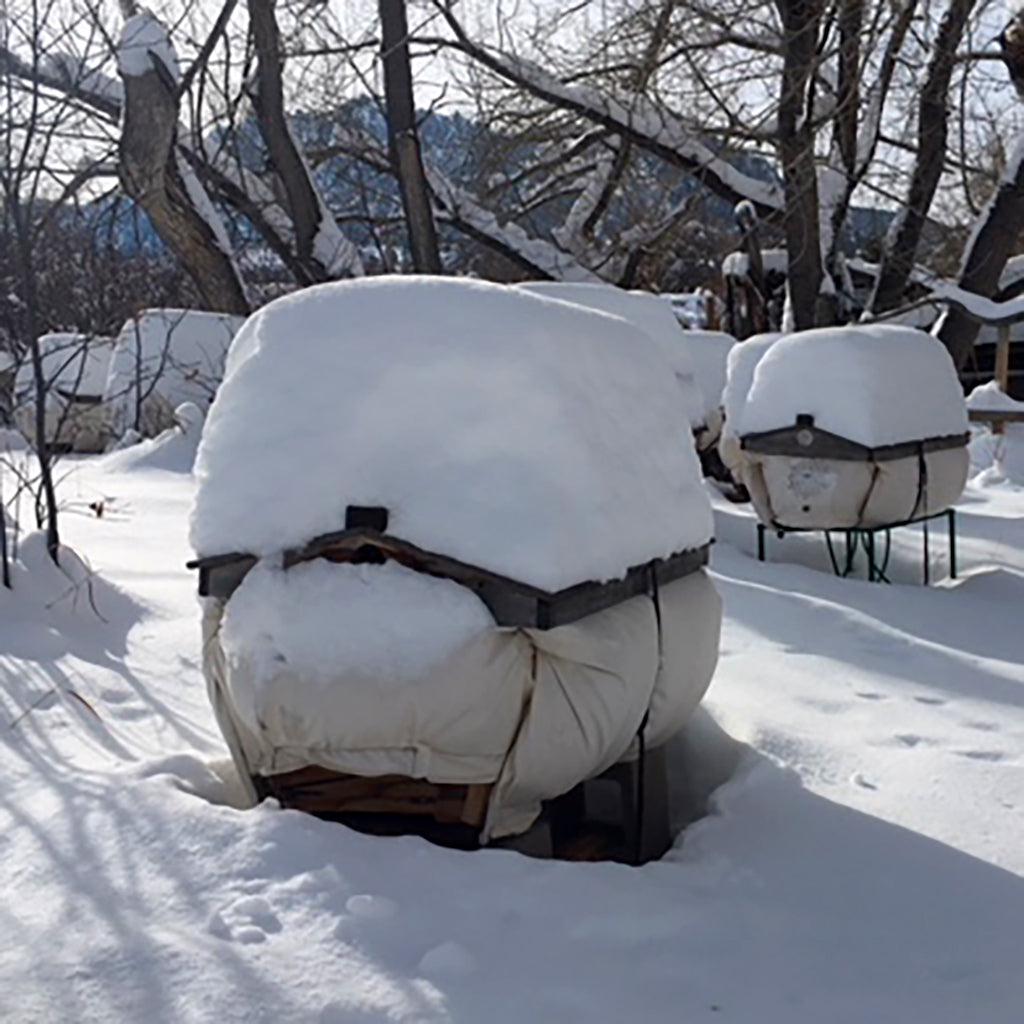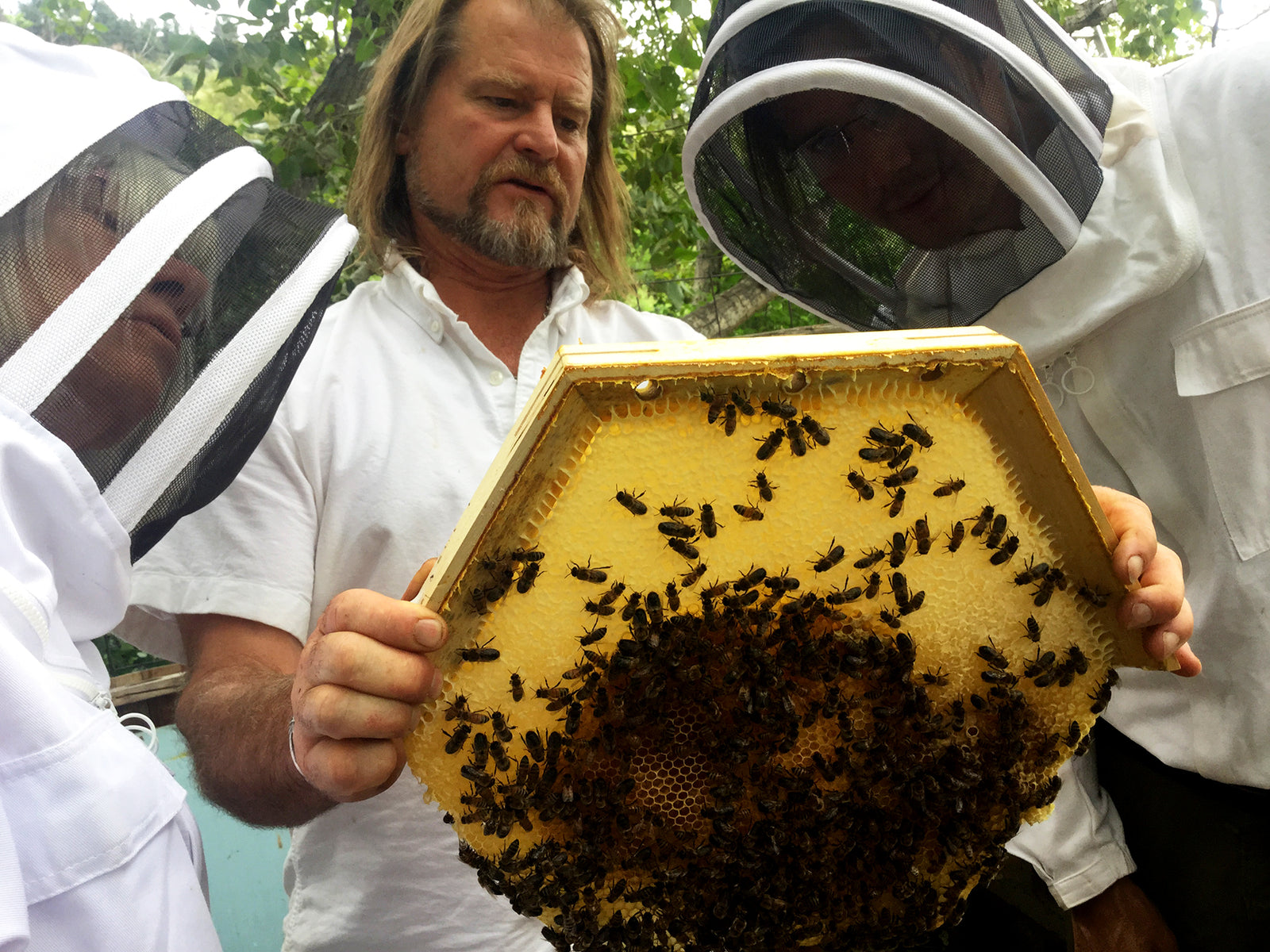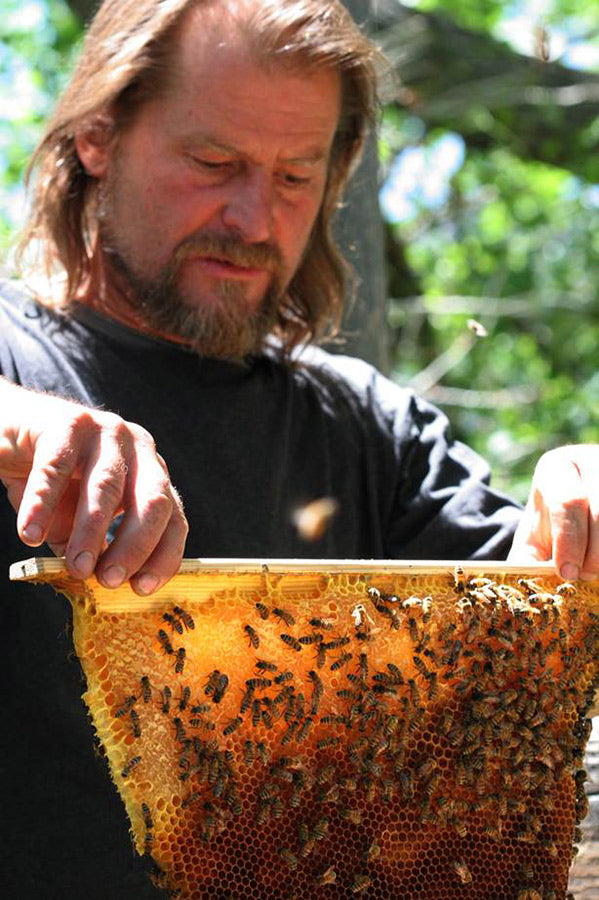There exists a subtle but big difference in top bar hive designs, so it is important to understand how air moves within the hive, what is best for the colonies health both in the winter and in the hot summer months.
Along with air flow, moisture is the second big factor that is associated with the movement of air within the hive. The bees have have the ability to regulate their hive temperature. Bees do this by fanning, using their wings to blow air in specific directions, individually or as a team. In the summer months the bees will bring water into the hive in order to create evaporative cooling. The hanging combs act like the "fins" of a radiator and are most effective if perpendicular to the entrance. This is how a swamp cooler is orientated.

Dangerous conditions for the bees can exist in the fall when very hot days are interspersed with very cold days. What happens is the bees collect water to cool the hive during the hot days, but as the temperature cools, the bees cannot effectively vent the moist air out of the hive and they get chilled or even worse mold develops. This is why an entrance reducer, a block of wood set into the entrance of the hive in the fall, can be detrimental to the bees ability to effectively remove the moisture from the hive.
The bees know the best what they need to do internally to keep this hive alive.
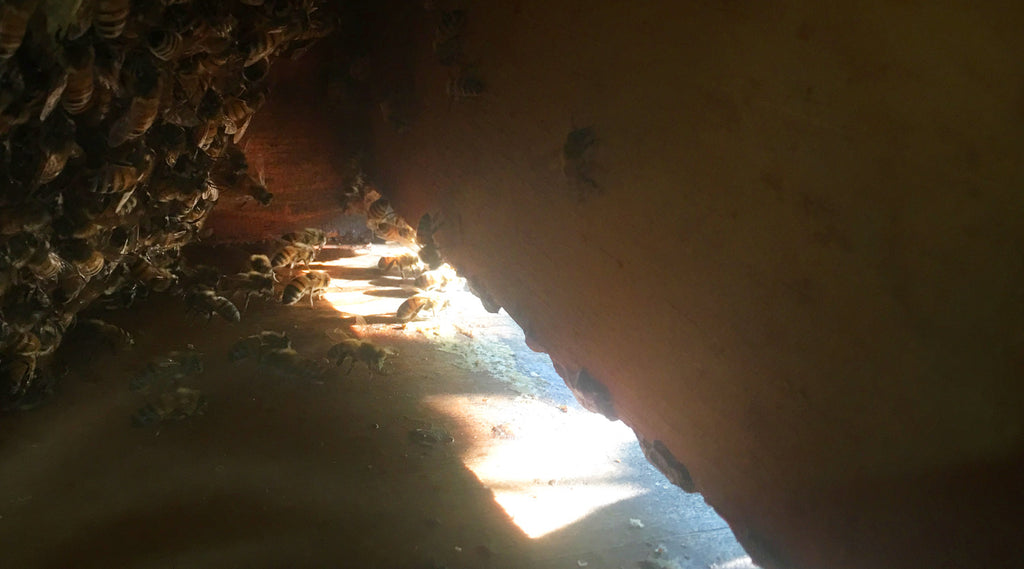
A wild bee colony in a top bar hive will propolize their entrance closed incrementally as winter approaches. A "package of bees" could have lost this genetic behavior. So we watch! If the bees are not adding any propolis to the entrance, then we can put small sticks in the entrance to close it down, this way the bees can push out the sticks if they find it getting too hot in the hive.
If your bees did not originate in your area (if they came in a package from California, for example), they may not have the genetic behavior to seal their hive before winter arrives. If the bees have shown no sign of reducing the size of their entrance by late autumn, you can help them out by using a bunch of small sticks in the entrance. The bees will be able regulate dangerous temperature extremes by pushing out the sticks and re-opening the entrance.
Where should the entrance be in the top bar hive for the bees to best regulate air flow?
I have conducted several experiments by giving the bees top and bottom entrances at the end of the hives. Bees given the choice of entrance position, abandon the top entrance with in two weeks. I have also given bees a choice of side holes and a bottom end entrance. With in two weeks the side entrance holes are propolised shut and the bees are using the bottom end entrance. It is somewhat hard to visualize but the bees can more effectively circulate air out the 'bottom, end entrance" of the hive because the floor of the hive is clear of combs, there are no obstructions, so the bees can use the side walls of the hive to fan along and move air out the entrance. Imagine trying to get effective air flow out of three holes in the side of the hive.

Why don't you have screened bottom boards for increased ventilation ?
I've looked at a lot of wild hives in trees over many years as a bee steward and they all have one thing in common, they have a very small entrance and no screened bottom board. The screen bottom board creates such an open flow of air the bees have a very difficult time regulating the hive temperature. It is like having a swamp cooler in the window of your house going on a very hot day and someone has left the sliding glass door open. Hot air is just flowing in the open door, rather then containing the cool air you created by "fanning" at the small entrance.
Bees Critical Sense of Communication Disrupted by Screen Bottom Boards
The screen bottom board also creates drafts which waft away the hive scents crucial to bee communication. I've seen colonies that have almost completely propolised the screen bottom closed. Now why would they do that?
We have had people in warmer climates drill ½” holes covered with screening in the back of the hive near the top. Listen to the intensity of the sound of fanning and watch your bees. If they propolize the holes shut then they didn't need them.
In the winter the horizontal design top bar hives really give the bees a good chance of overwintering. Why?
The Langstroth hive is built like a chimney and as a result a large temperature gradient exists with moist heat rising to the top and condensing into water droplets which drips down into the hive. Top bar hives are built horizontally and don't have this issue. In our hives, the glass window creates a slightly cooler surface and actually serves well as a condensation site, allowing the bees access to some water in the winter.
What is the Cause of Cross Combs in Top Bar Hives ?
A stable inner hive temperature ensures that cross combing does not develop.
If you want to give the bees a great way of moving hot air along the top of a top bar hive, use the "Passage Bars" we have developed. You will be amazed at how the bees interact with these continuous tunnels through the hive.
See more details about the Passage Bars on the Golden Mean Hive page
Help the bees regulate the temperature of their hive, use a Ventilated Roof !

A Ventilated Roof on Your Hive? Yes! A very good idea.
Your top bar hive needs some type of roof to go over the flat lid of the hive. Whether it is a Cathedral Hive or a regular Top Bar Hive, proper ventilation from a roof is needed.
With a Top Bar Hive the combs can become very soft and fragile if the hive is overheating. If you do not have a roof, the sun beats down on the flat lid of the hive and overheats the hive. The Ventilated Roof works like the roof on a house creating a barrier from sun beating on a flat surface. The venting along the ridge of the roof allows hot air to escape and flow out this top ridge vent.
Just putting a non-venting roof on the hive without these features actually creates a heat trap and can heat up the top bars causing them to collapse into the hive. The roof we created is designed to breathe and create a lot of air exchange through natural, micro convection. Our roof designs are modeled after the way that most house roofs are constructed, with a vented peak. Even in hot still air, the heat will rise up through the ridge vent and pull cooler air into the roof space
We have all of our Ventilated Roofs in stock for our top bar hives and the Cathedral Hive.
We also have plans to build your own ventilated roof.
Purchase the - Ventilated Roofs
Other ways to Cool your Hive
*Make sure your bees have access to a good water source
* Make sure your hive is getting adequate shade during the heat of the day.
* Make sure your hive has adequate air flow all around the hive. If your hive is right next to your house, garage or shed, the radiant heat from the side of the house may be overheating your hive.
* Make sure your false back is placed all the way to the back of the hive during the spring and summer. The false back is only used the first 3 days when you install the bees. In October when you Winterize your Hive you can move the false back behind the last comb. But during April-October give the bees the entire hive. This will help with air flow and provide proper ventilation.
* On extremely hot days, or extended periods of hot days you can spray water around your hive even lightly spraying the roof of the hive to cool it down. In July and August you may want to do this procedure to keep your bees cool
.


